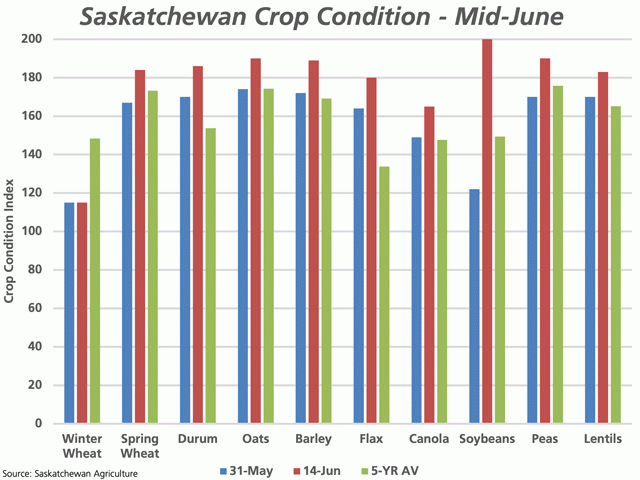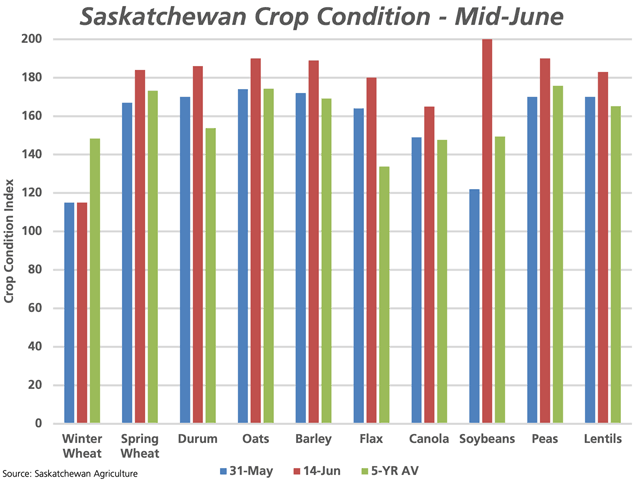Canada Markets
Saskatchewan Crops Respond Favorably to Rain
Widespread rainfall across the province of Saskatchewan for the week ended June 14 has led to improving soil moisture and crop conditions. Over the week, the area of the province rated as having adequate topsoil moisture improved from 56% to 72% -- equal to where it was on May 31 and tied for the second-highest rating reported this spring.
The area rated poor to very poor fell from 44% to 26% over the past week, the lowest percentage seen in three weeks and the second-lowest reported this crop year.
P[L1] D[0x0] M[300x250] OOP[F] ADUNIT[] T[]
A combination of the precipitation and recent heat supported plant growth, with the government estimating 70% of the fall cereal crops (66.2%), 76% of spring cereals (66.2%), 66% of oilseeds (59%) and 78% of pulse crops (70.2%) are rated at normal growth stages for mid-June (five-year averages in parenthesis). This rating for spring cereals is tied with the highest rating reported in the past five years, a level also reported for 2018. The rating for oilseeds is down from the 70% reported for 2018 and the rating for pulse crops is down slightly from the 80% reported for 2020.
Of the select crops on the attached chart, calculated using Saskatchewan Agriculture's crop condition ratings, only the winter wheat crop did not show improvement over the past two weeks, with the last condition ratings released on May 31. The crop condition index for winter wheat is shown unchanged at 115 points as of June 14, with an increase in the good-to-excellent rating offset by a surge in the percentage of the crop rated very poor.
Over the past two weeks, the crop condition index increased for all other crops shown, ranging from a 13-points increase for lentils to 183, to 78 points higher for soybeans to an index of 200, the highest mid-June rating in five years. The crop condition index for spring wheat increased by 17 points to 184, the highest in three years, while the durum rating increased by 16 points to 186, the highest index calculated since 2016. The canola rating improved by 16 points to 165, marginally higher than this time last year and the highest in three years.
As seen on the attached chart, the calculation for the crop condition index results in an index that is higher than the five-year average for mid-June for all the major crops except winter wheat.
Cliff Jamieson can be reached at cliff.jamieson@dtn.com
Follow him on Twitter @Cliff Jamieson
(c) Copyright 2021 DTN, LLC. All rights reserved.








Comments
To comment, please Log In or Join our Community .